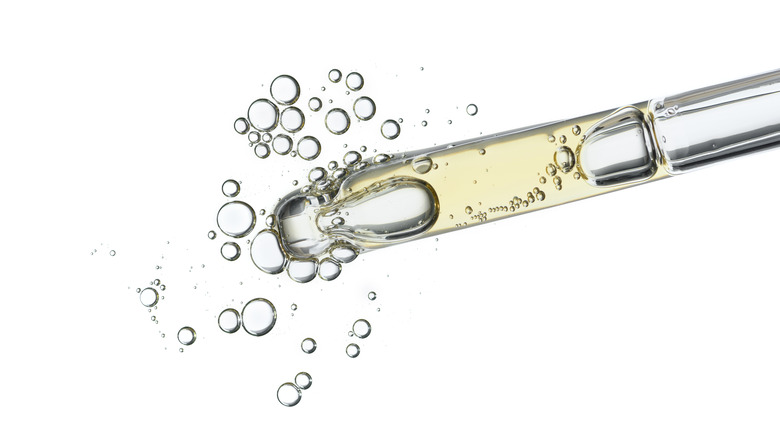The Truth About Adding Squalane To Your Skincare Routine
Squalane has been a kind of taboo topic in the past. The oil, found in products such as anti-aging creams and lip glosses, has often been sourced from squalene, which comes from the liver of sharks (via Oceana). Fortunately, many companies have turned to using plant-based forms of squalane in their products, which is naturally drawn from plants such as olives and sugar cane. (via Byrdie).
So, what is squalane? Board-certified dermatologist Ryan Turner, MD, details the difference between squalane and squalene, "Squalane is the hydrogenated form of squalene," Turner goes on, telling Byrdie. "[It is] a lipid (or fat) that is naturally found in the skin and secreted by the sebaceous (oil) glands. Squalene is not very stable for use in skincare products, so squalane is used for its longer shelf life."
If you have recently seen squalane trending, there is a good reason why, as the oil does have tremendous benefits for the skin.
How squalane can change your skin
When it comes to the benefits of squalane, Dr. Ryan Turner has plenty to say, telling Byrdie, "Squalane is great for softening or smoothing the skin, as it may help to support the natural outer barrier of the skin. It is a good option for dry and irritated skin, as it has been shown to help calm redness and inflammation." He goes on to say that everyone can benefit from using this oil, calling squalane a "superstar skincare ingredient."
According to Healthline, using squalane can help boost collagen, which produces firmer skin. The Skin Care Edit reports that it also plumps the skin as well as helps to protect it from free radicals, which can cause age spots and pigment problems. Indie Lee, the famous skin-care brand founder, tells Refinery29 that squalane is an "anti-aging all-star," and that "...using products that contain squalane oil can help to combat the signs such as wrinkles and dryness."
Bonus, research shows squalane is a natural detoxifier, which helps to reverse the effects of skin irritants such as dirt, oxidative molecules in the environment, and pollution.

